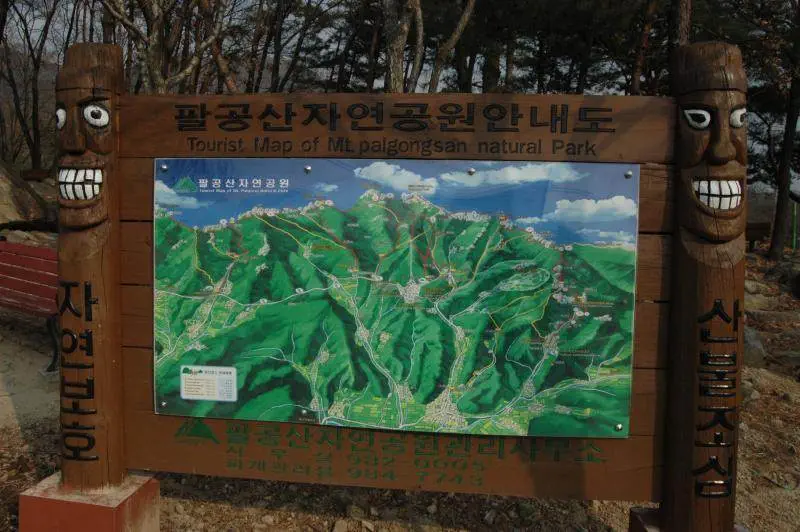
As part of Palgongsan Provincial Park, Pagyesa is one of many destinations spread out across the mountain. First built in 804 by a priest named Simji (not Simba, you Lion King obsessed reader), it was renovated in 1605 by priest Gyegwan and 1695 by priest Hyeoneung. With several Daegu Tangible Cultural Properties, 17 buildings and a lot of karma, it’s worth the uphill trek to reach. Just don’t bring a backpack full of stuff with you – even after the bus reaches the parking lot it’s a hike of 1.1 kilometers. Uphill.
It’s worth mentioning that this particular temple isn’t listed in the Lonely Planet – it’s overshadowed by the more popular Haeinsa, which holds the Tripitaka Koreana (the 81,340 woodblock scriptures that have survived since the 15th century). Who wants to go to the same places everyone does? You’re welcome 🙂
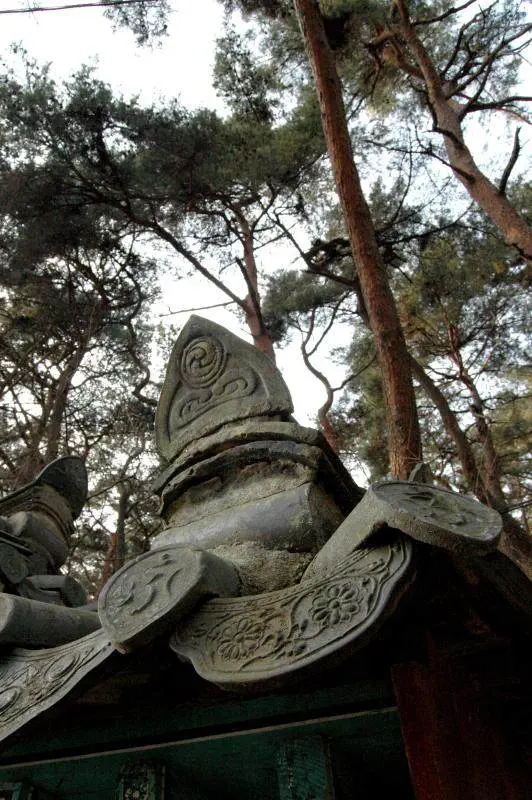
I’m not quite sure why the corner of the structure holding the map was interesting… but I like the picture all the same.
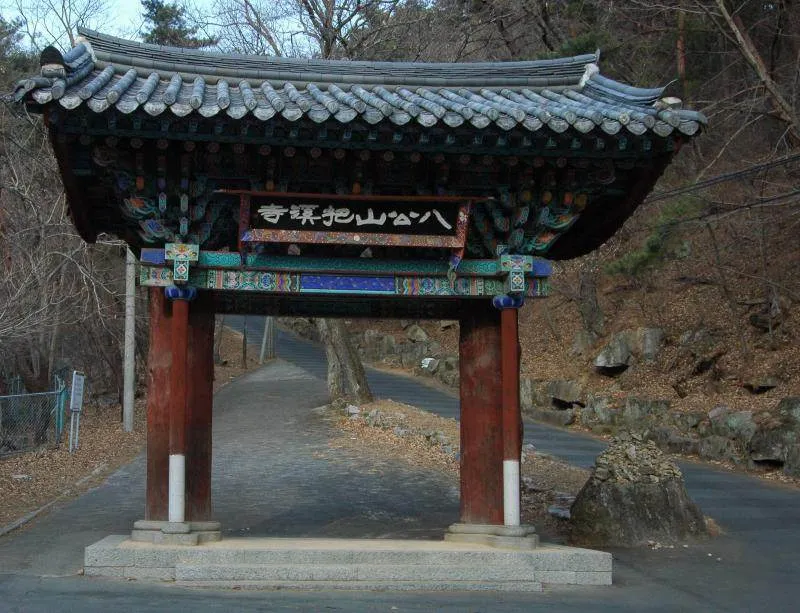
The front gate – walk or drive your private car up all the way to the top.
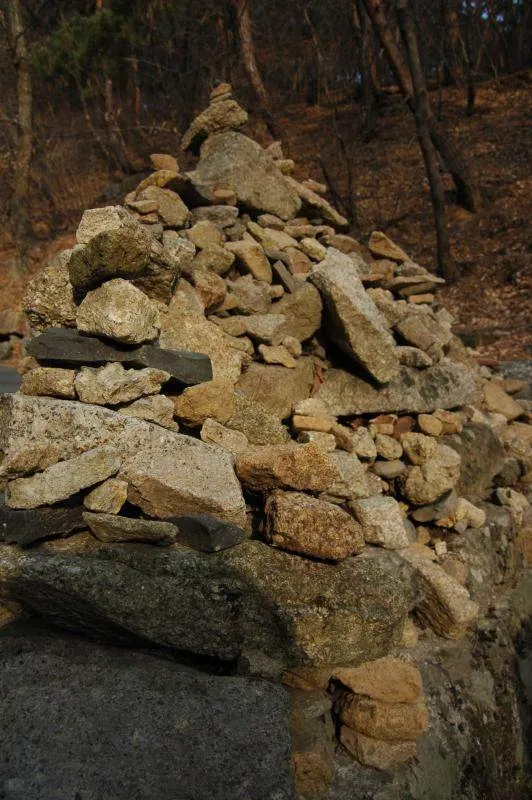
A Buddhist rock pile (called ovoo in Indian Buddhism), which is reminiscent of Korea’s shamanistic past and the belief that rocks have souls.
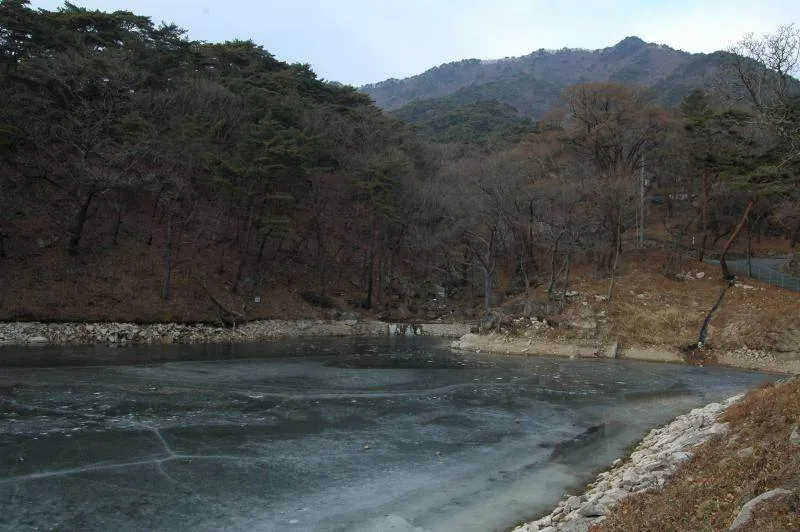
We were still walking towards the entrance when we discovered the pond was completely iced over.
For those who expect Buddhist temples to be collections of ancient buildings and wizard-like monks able to levitate, you’re in for a surprise here:

Some rather modern-looking buildings greet you after your trek uphill. The largest building is called 설법전, and was one of the few that featured a more modern construction.
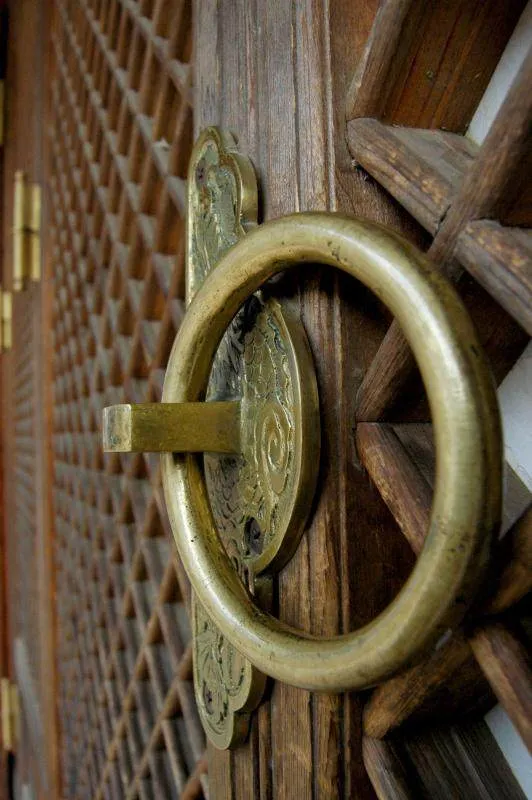
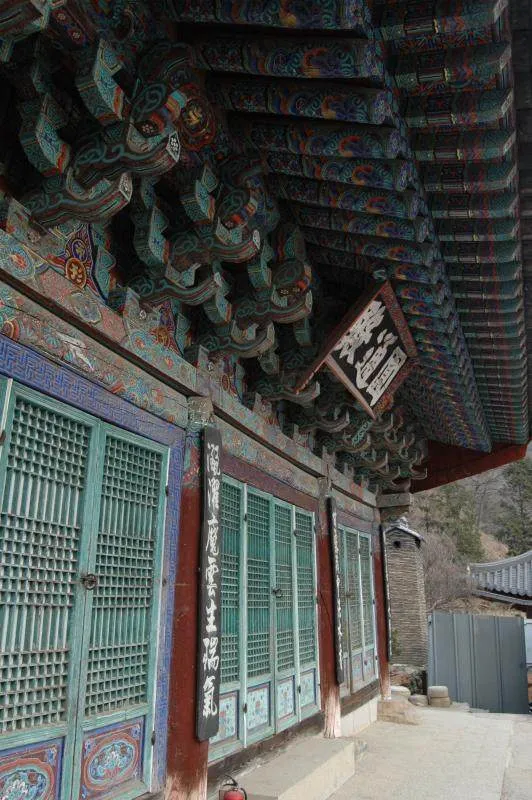
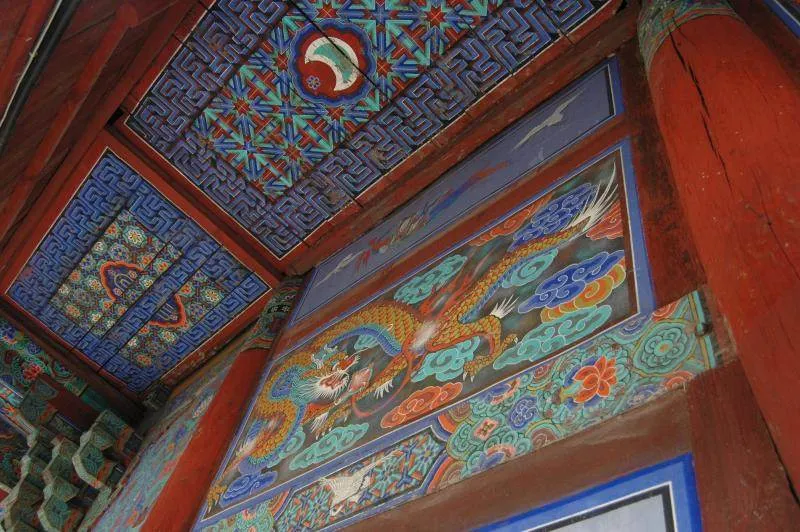
원통전 – also known as the main hall in the center of the area.
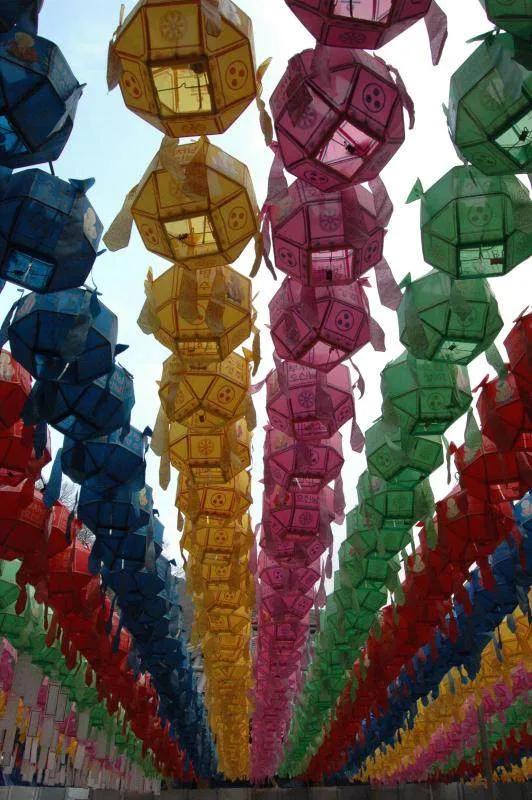
Although you most commonly see lanterns during Buddha’s Birthday (April or May, depending on the lunar calendar), there’s no reason to take them down once they’re up. Strung over the area in front of the main hall, they might provide some shade in the summertime – for now, they’re simply pretty to look at.
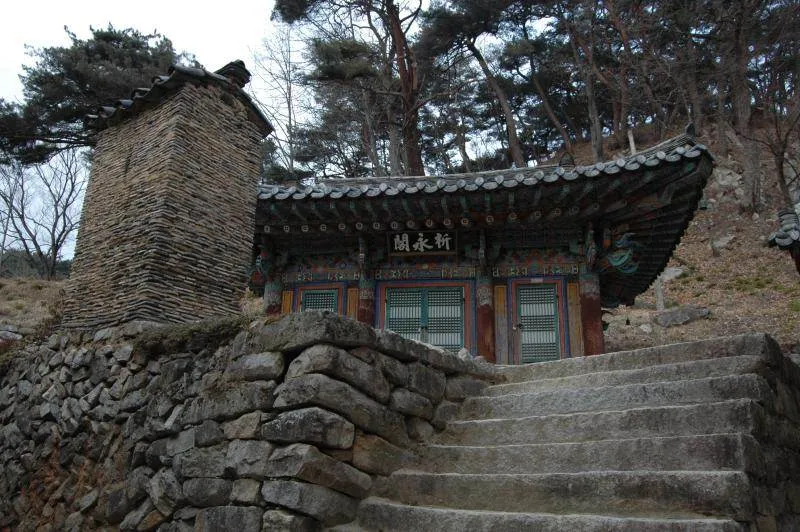
An interesting historical sidenote. The building is named Giyeonggak (기영각), and essentially means a pavilion (gak) to pray (gi) for King Yeongjo (yeong). It was constructed in 1696 by priest Hyeoneung after King Sukjong asked the priest to pray for the birth of a son to succeed him. While the woman that presumably did most of the work isn’t mentioned, Yeongjo’s birth was supposedly the result of the praying. Although the building has been renovated twice recently (1974 and 1983), the style is typical of the late Joseon Dynasty period during which it was built.
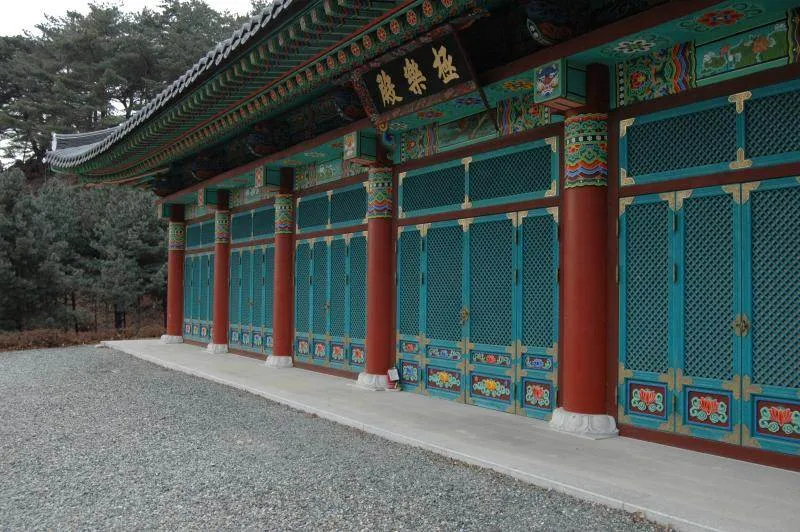
One of the other modern recreations (국락전) – it’s completely closed, so I couldn’t tell you what it’s for specifically. By the size I’d guess it was a meditation hall.
Pagyesa is quite peaceful – definitely worth the uphill hike. Because of its relative unknown status, you’re likely to be the only foreigner within a fair area. If headed to Palgongsan park, bear in mind the areas worth seeing are really spread out on the mountain. You really have to set out to see a specific site instead of just going to the general area.



Pagyesa is a really beautiful place. I once went there with my girlfriend. We walked into the middle of a little courtyard at the exact same time as three of my co-workers – who'd all arrived with no knowledge that the others were coming… It was freaky.